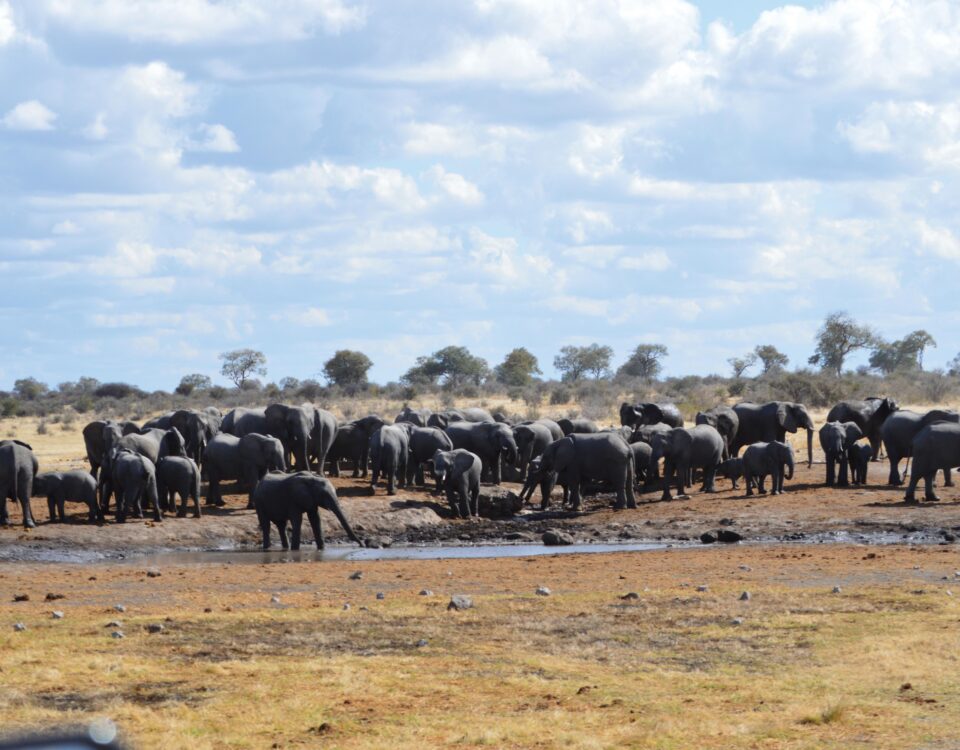The return of the whales
June 18, 2012Transfrontier Conservation Areas in Namibia
June 18, 2012By Mike Griffin
The bite of the zebra snake, Naja nigricincta nigricincta, has always been a problem in Namibia. This snake is very common in the country, and appears to be attracted to and do well in populated areas, both urban and rural. It is quick to bite, and unlike that of most cobras, its venom is highly cytotoxic.
However, the polyvalent antivenom that is available, is ineffective in the treatment of a zebra snake bite. The current recommended medical treatment is radical excision around the site of the bite, of which severe disfigurement and amputation is a common outcome. If venom finds its way into the bloodstream, even more problems, including systemic ones, arise. The overall treatment can be expensive, often extending for over a year, especially if initial treatment was too conservative.
The only positive aspect is possibly that the zebra snake’s venom is slow acting, giving the victim plenty of time to seek medical help and allowing the medical fraternity time to debate the best course of action. Although fatalities are rare, zebra snake bites are a serious national public health hazard.
After a number of well-publicised cases in the mid-1980s, a local NGO offered to sponsor the production of a species-specific serum. However, when the South African Institute of Medical Research (SAIMR) quoted a price of R10 000 for the trial run, the NGO lost interest. The South African Defence Force was also interested in the development of an effective counter-measure, as troops were regularly bitten by these snakes. Finally, in 1992, the German Ambassador to Namibia made a grant available, now administered by the Namibia Nature Foundation, enabling the project to go ahead as originally planned with the SAIMR.
Raw venom would be supplied from Namibia, the SAIMR would produce the serum and conduct initial laboratory tests, and this initial batch would then be tested under local clinical conditions by local medical practitioner, Dr Christo Buys. At this time, the Ministry of Environment and Tourism (MET) became committed to co-ordinating the project, specifically in terms of collecting and housing the snakes and extracting the venom.
Realising that a system needed to be developed to maintain and work with a large number of highly dangerous snakes, MET officials designed a system of individual cages with internal nest boxes that could be closed from the outside and had double sliding glass fronts on which sprayed venom could be gathered. This innovative idea was designed to replace the traditional method of hand-milking snakes, which stresses the snakes and is dangerous for the handler. Most important, the system allowed all daily maintenance as well as venom collection to be safely accomplished by non-professional staff.
Individual snakes were chased out of their nest boxes once a week, and enticed to spray venom on the glass plate in front of their cage. This might well be the only documented case in history when staff were actually encouraged to tease captive snakes. The inside plate was then slid out and the venom removed. As the second (outside) glass plate was still in place, the snake was securely contained.
The snakes were kept in solitary isolation and allowed to spend all of their time in the nest box. The rationale was that they would not rapidly become habituated to human presence as usually happens with captive spitting cobras, causing them to loose their desire to spray, which is entirely a defensive action.
Once the protocol is refined, and the antivenom has proven to be effective, the function of housing snakes and collecting venom can be turned over to the local medical and/or private sector. Investigating and developing future alternative out-sourcing arrangements is a part of the project. It is unlikely that Namibia will ever develop the capacity to produce the antivenom locally. Nevertheless, it is highly desirable that the venom-collection process remains a Namibian initiative.
Within one year the MET had collected the requisite amount of zebra snake venom. By this time, however, the venom institute of the SAIMR had evolved from a socially responsible government institution to a strictly commercial operation. The project is now on hold, until future options can be evaluated.
This article appeared in the 2001 edition of Conservation and the Environment in Namibia.


3 Comments
The school of veterinary medicine might be an awsome institution to work with on this project. They can indeed provide the necesarry care to the horses.
This could indeed be a project to embark on. Keeping the horses are costly and financial support would be essential.
Articles about this snake is contradicting each other. Horrible snake.